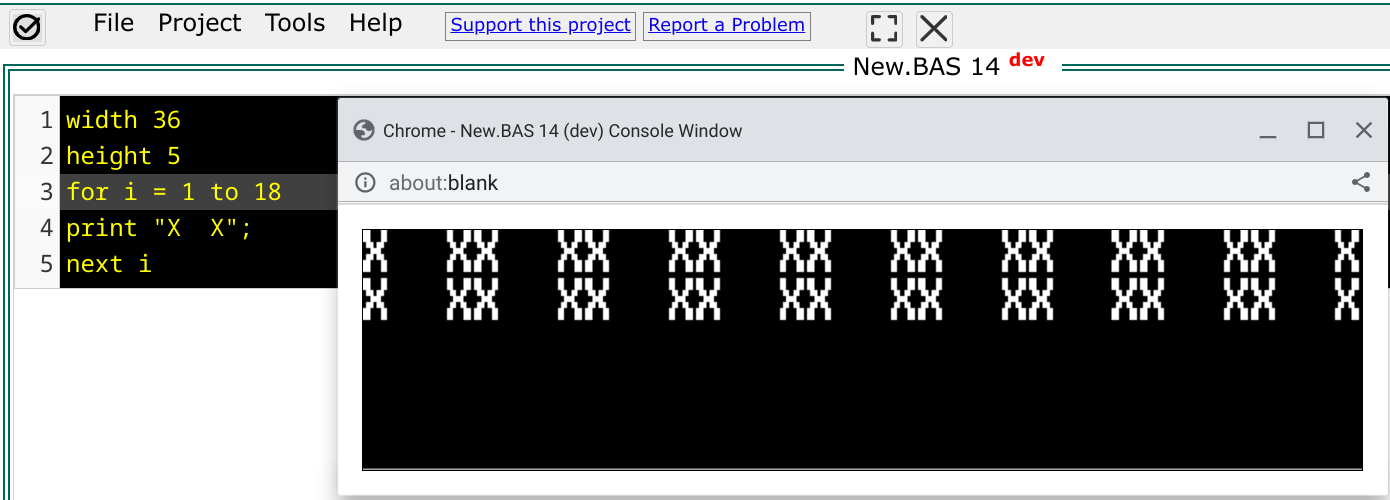06-24-2023, 04:53 PM
About the (already existing) WIDTH and the (upcoming) HEIGHT statements
BAM's WIDTH statement sets the number of character columns for the current screen mode.
Any screen mode, and any number of columns (not limited to 40 and 80).
BAM's HEIGHT statement sets the number of character rows for the current screen mode.
These statements alter the pixel width and pixel heights of the current screen mode, and will accordingly impact graphics statements (because of the change in number of pixels.
When a program is focused on graphics, use SCREEN _NEWIMAGE(pixel-width, pixel-height, screen_mode) to setup the screen. Fonts for screen modes being 8x8 pixels (or 8x16 pixels in some modes), the number of columns and rows of text will depend on the pixel-width and pixel-height of the screen.
When a program is focused on text, use WIDTH and HEIGHT to setup the screen for the current screen mode.
You can try this stuff out with the current TEST VERSION of BAM.

BAM's WIDTH statement sets the number of character columns for the current screen mode.
Any screen mode, and any number of columns (not limited to 40 and 80).
BAM's HEIGHT statement sets the number of character rows for the current screen mode.
These statements alter the pixel width and pixel heights of the current screen mode, and will accordingly impact graphics statements (because of the change in number of pixels.
When a program is focused on graphics, use SCREEN _NEWIMAGE(pixel-width, pixel-height, screen_mode) to setup the screen. Fonts for screen modes being 8x8 pixels (or 8x16 pixels in some modes), the number of columns and rows of text will depend on the pixel-width and pixel-height of the screen.
When a program is focused on text, use WIDTH and HEIGHT to setup the screen for the current screen mode.
You can try this stuff out with the current TEST VERSION of BAM.



